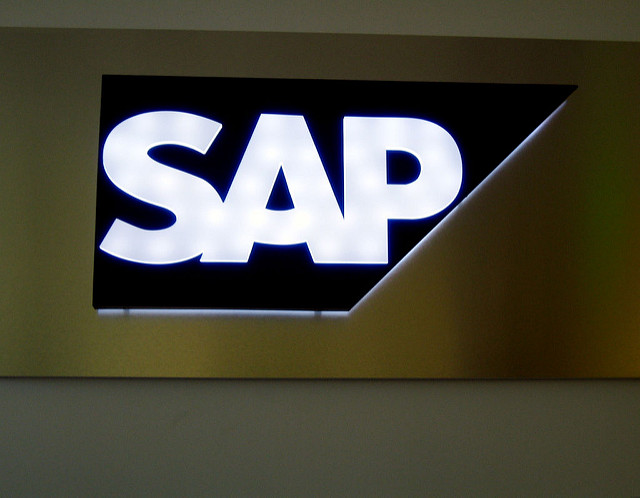Internet of Things
Bootstrapping to $30 Million from Czech Republic: Vaclav Muchna, CEO of YSoft (Part 5)
Sramana Mitra: It must have been very helpful for you to recruit a bunch of channel partners who would then go and sell that same solution to other major players.
Vaclav Muchna: Exactly. Once they started with us, there was another deal with the headquarters of a central European bank. That helped us to build the relationship through the channel. We took the decision that we would be 100% indirect. Later on, we developed that model where the vast majority of our partners not only sell our product, but they also support it. We only support our partners and they go and support the end customers. If something goes wrong, the customer would call the channel partners. >>>
Bootstrapping to $30 Million from Czech Republic: Vaclav Muchna, CEO of YSoft (Part 4)
Sramana Mitra: What year are we talking about?
Vaclav Muchna: 2003. In 2002, we launched that web server. We had to produce 20 terminals and we had no money. I tried to go to the bank but, of course, they didn’t let us borrow anything. There were only few VC funds. The VC market almost didn’t exist. The few VC funds that existed said that this was not an interesting project. Eventually, I found a business angel. He lent me money personally – not to the company. You can understand the impact on liability. The interest rate was 40% per annum.
Sramana Mitra: My goodness. >>>
Internet of Things is the Future for SAP
SAP (NYSE: SAP) is one ERP player that has successfully adapted itself to the changing market landscape. After proving its mettle within the Cloud/Big Data market with HANA, the company is now gearing up to target the Internet of Things (IoT) segment.
5 Thought Leaders in Internet of Things
The Internet of Things (IoT) trend is significant, and will blossom over the rest of the decade. Actually, IoT has been around for a while, and I have been interviewing leaders in the field to share why things are accelerating now and where the gaps are. Here are five conversations to help give you a broad perspective on IoT today.
- Colin Sutherland, Co-Founder of Geotab – There’s a ton of data being generated through vehicle telematics that need apps to make sense of. Entrepreneurs looking for problems to solve – please read on!
- Bob Witter, CEO of Device Solutions – North Carolina, at one point, had a large concentration of cellular technology companies. Today, some of that talent has come together around IoT.
Thought Leaders in Internet of Things: Frank Greer, CEO of Zipit Wireless (Part 3)
Frank Greer: As long as the product is in the market, we will be operating this cloud infrastructure. It gave them the confidence to have a partner that could do all of those things. It let them focus to come up with the product, source the product, manufacture the product, and get it distributed. They let us take care of this new connected world challenge.
Sramana Mitra: What industries in your experience are adopting IoT most aggressively?
Frank Greer: That’s a great question. The answer is that it’s really all over the map. >>>
Thought Leaders in Internet of Things: Frank Greer, CEO of Zipit Wireless (Part 2)
Sramana Mitra: Let’s go through some use cases. It sounds like you cater to different industry sectors. Take IoT use cases from three different sectors and let’s walk through them.
Frank Greer: A great example for a company that we helped is Bushnell. Bushnell is a well-known brand in the outdoor products category. They’re well-known for binoculars, trail cameras, and laser range finders. They had never developed a connected cloud. They never had to worry about interacting with the carrier, but they saw opportunity. They said, “If we can take our trail cameras and connect that, wirelessly, to a device and get a user’s images, that can be a huge benefit.” >>>
Thought Leaders in Internet of Things: Frank Greer, CEO of Zipit Wireless (Part 1)
Let’s review some more IoT use-cases through Frank’s eyes.
Sramana Mitra: Let’s start at the very beginning of the Zipit story. Tell us a bit about the company. What do you do? How do you do what you do? Also, give us a bit of your background.
Frank Greer: I’m the CEO of Zipit Wireless. We’re a 10-year old company. We’re based in Greenville, South Carolina. We were a startup funded by VCs. We were spun out of a company almost 10 years ago. Our objective was to take our expertise and knowledge in cloud-based computing and remotely managing devices, and then apply that to what we felt was a thrilling business opportunity. >>>
Thought Leaders in Internet of Things: Tom Bianculli, Vice President of Technology Office at Zebra Technologies (Part 4)
Sramana Mitra: If you lift yourself to the 30,000-foot level, what trends really excite you and where do you see open problems that need to be tackled by new entrepreneurs?
Tom Bianculli: There are these three things that we talk about a lot. There’s IoT, cloud, and mobility. The three of those are coming together. We’re going to have roughly 25 billion connected devices by 2020. Right now, we’re probably sitting at under six billion connected things. In the next four years, that’s going to triple. It’s like everyone getting connected. That’s the IoT piece. Lots of people view cloud in lots of different ways. When I say cloud in this context, I mean the trend that’s focused on computing as a utility.
Whatever computing power I need, I essentially I have on tap. I can turn the knob up or down based on access to cloud computing. That allows me to do some >>>


